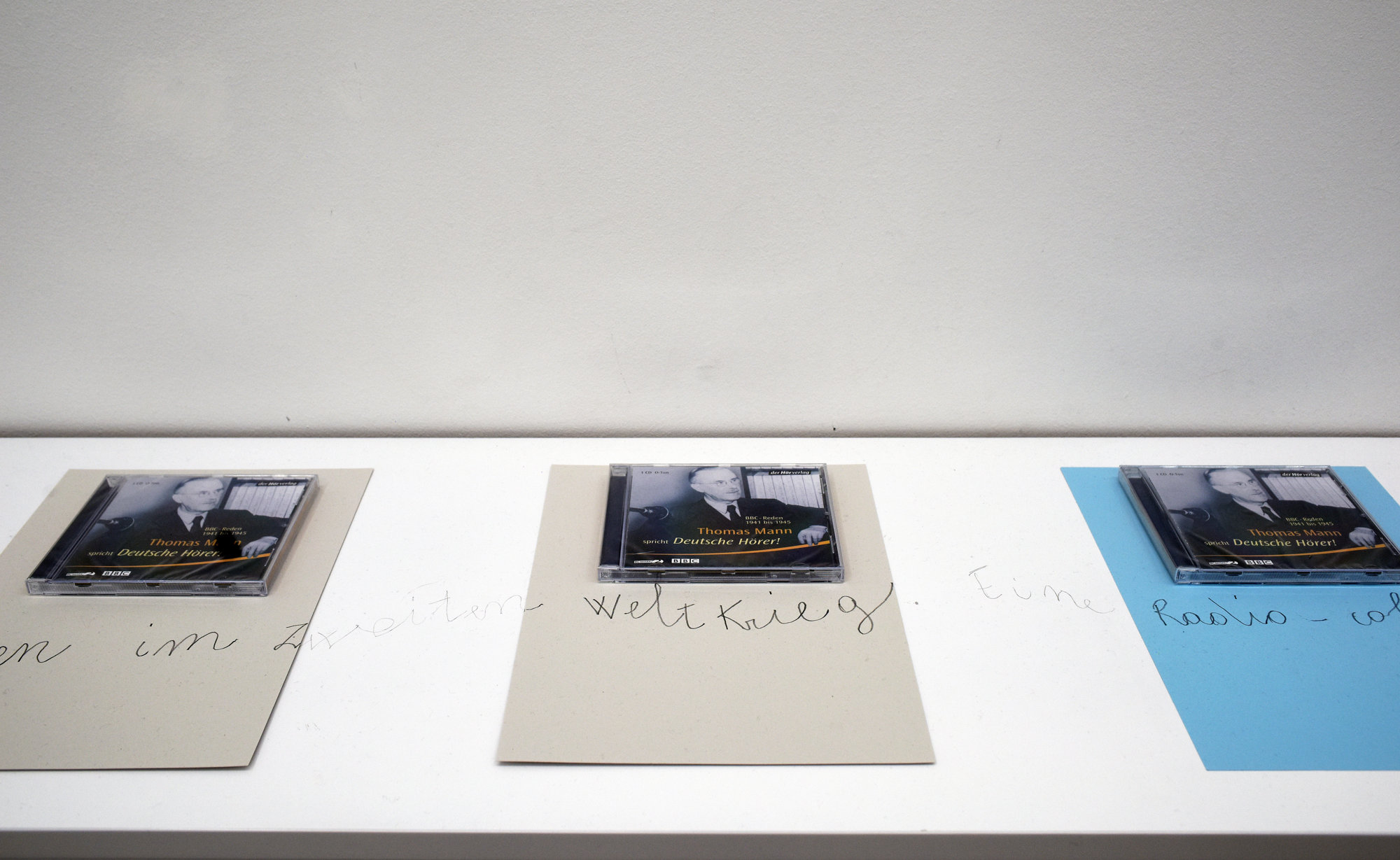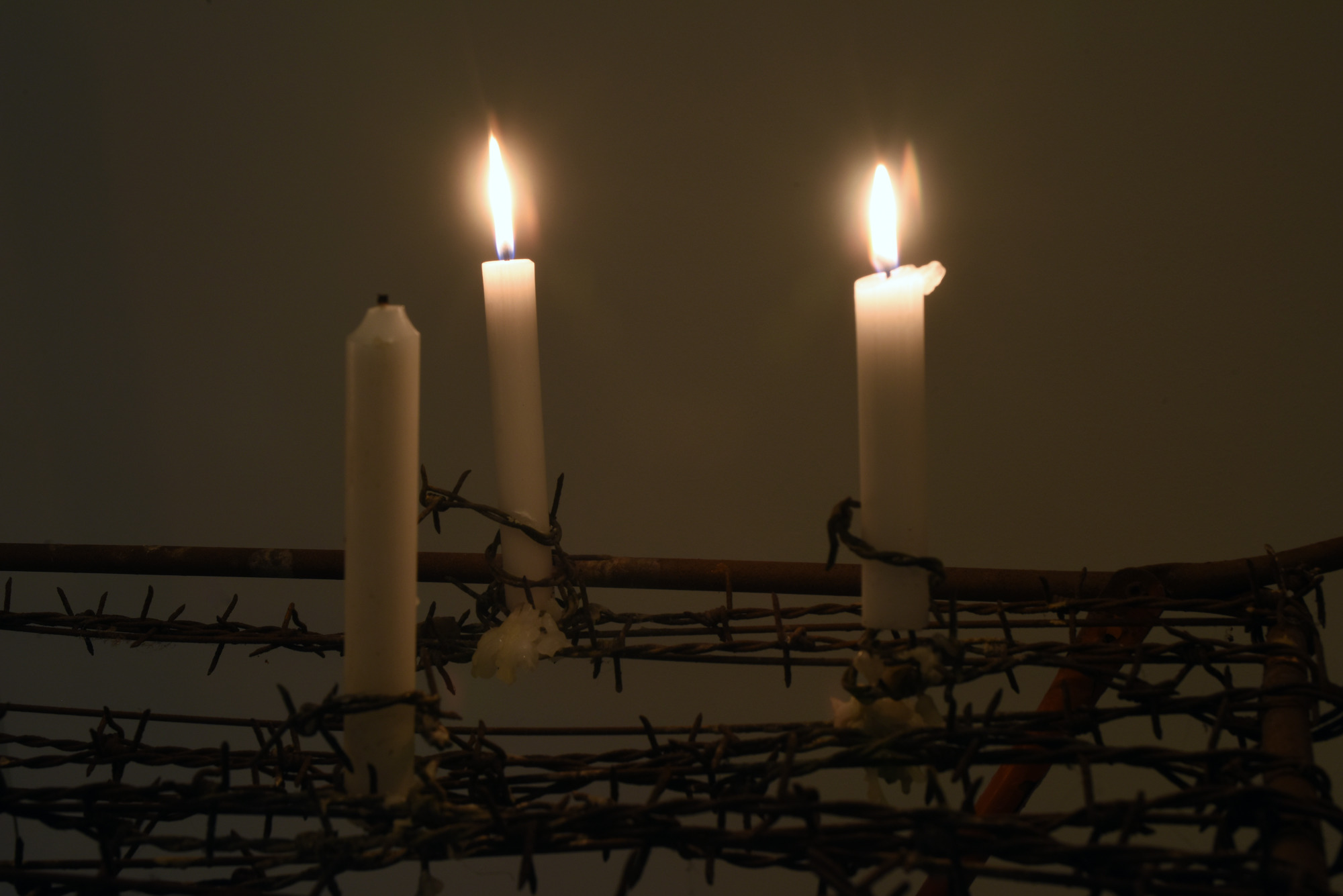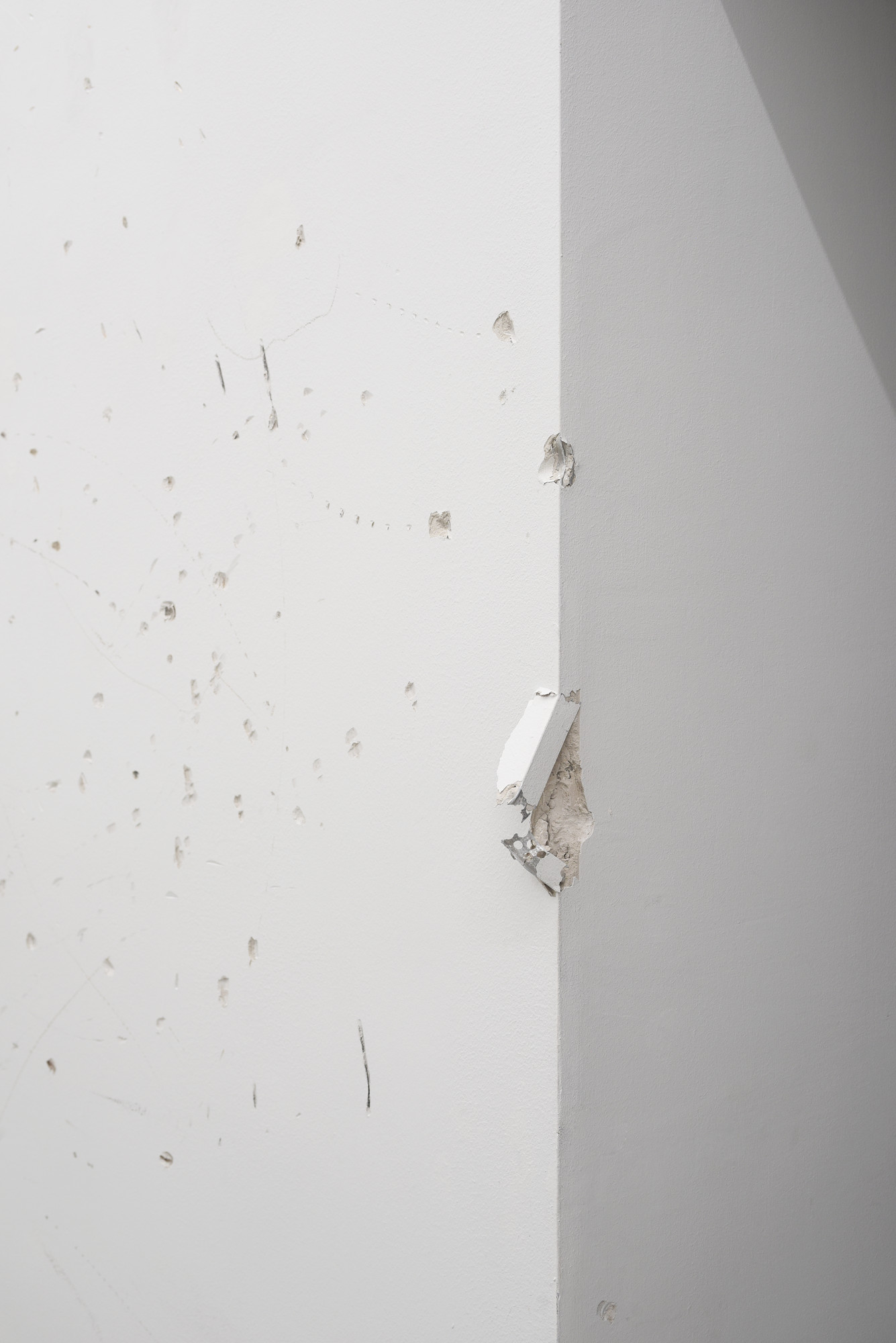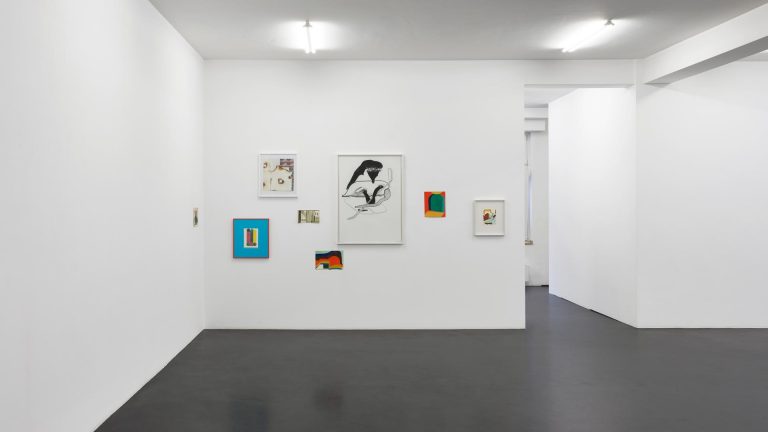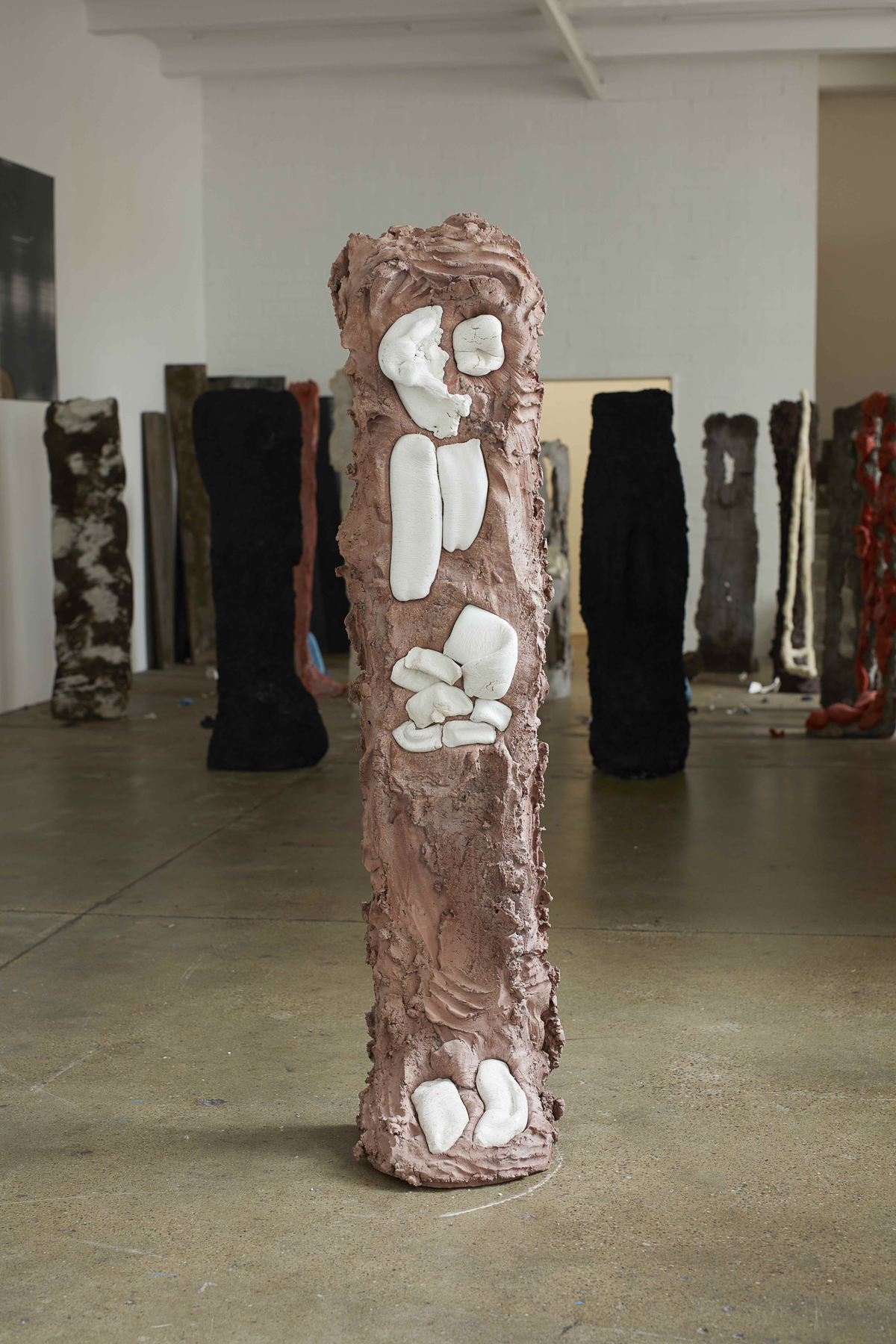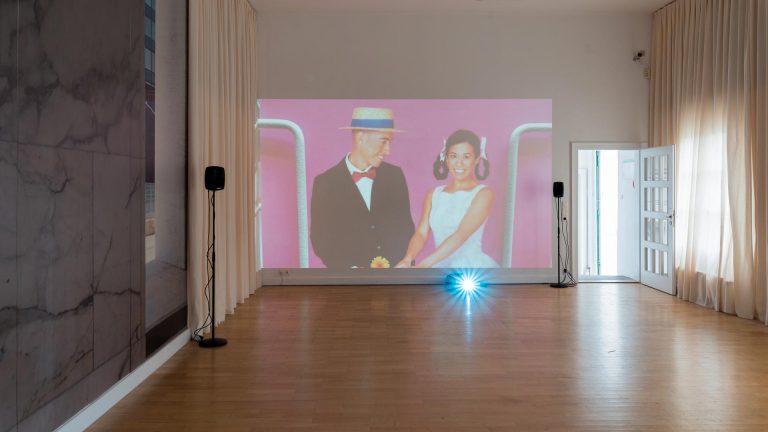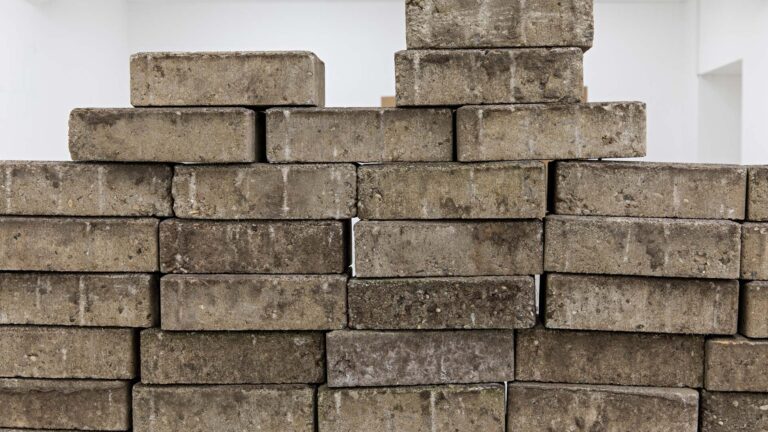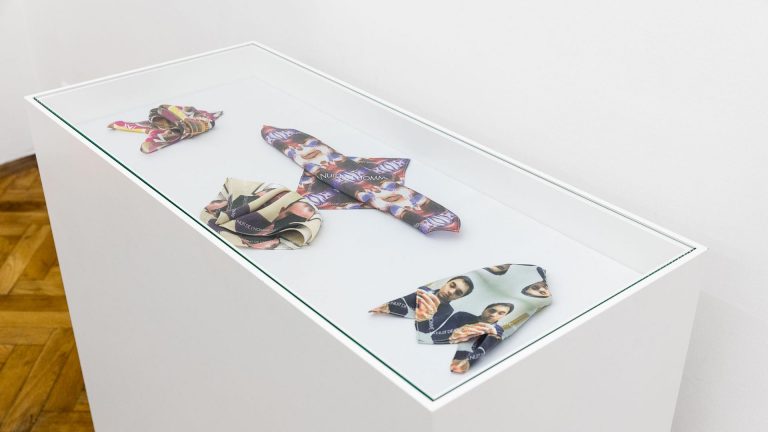Artists: Bruna Esposito, Jorge Peris
Curated by: Pier Paolo Pancotto
Venue: Rolando Anselmi, Berlin, Germany
Date: March 16 – April 20, 2019
Photography: Riccardo Malberti / all images copyright and courtesy of the artists and Rolando Anselmi, Berlin/Rome
Anti sleek technical trials
The word sleek is not part of the Bruna Esposito and Jorge Peris vocabulary. It just doesn’t belong to them, both verbally and mentally. Their individual, professional, cultural experience, in fact, although distant in intent as well as in outcomes, contemplates, basically, a common attitude, with an exquisitely ethical structure and in clear antithesis with the iconographic and iconological imagery that sleek contemplates. Their silent, almost secret gait, based on the adoption of organic and inorganic elements belonging to the world around them and the exploration of the material or immaterial boundaries that mark profiles, sublimated through an action, often prompted by social and civil urgencies, places them at the margins of the acquired system where sleekness has the upper hand over the substance of the subjects treated and their semantic value. This meeting highlights these similarities, emphasizing each shared note, even the most unexpected, thanks, perhaps, to the heterogeneity that defines the respective professional and individual figures.
Bruna Esposito (Rome, 1960) returns to Berlin after having spent a crucial phase of her experience (1985-1988) during which she initiated two leitmotiv of her creative journey, the “floating projects” and Fontana (I.B.A-Berlin) which, through a waste and water recycling system phytodepuration plant, it transforms composting toilets into a plastic / monumental system. These proposals already summarize a salient feature of the work: the creation of works that draw from a variegated iconographic and iconological repertoire, often inspired by everyday reality and the subjects that mark its development (common objects, poor materials, organisms natural), they are able to touch every part of the perceptive system, devoting themselves to a marked multisensoriality that involves the viewer in a total experience. In front of these proposals, clear in the compositional as well as the dense in substance the viewer, in fact, is solicited at the same time from a visual, intellectual and emotional point of view, becoming an active part of it, and this is the virtual mechanism that triggers. To emphasize this phenomenon intervenes the exquisitely ephemeral character that unites many proofs of the author almost as a warning of the provisional existence and of the awareness that everything in life is destined to pass or change. The work becomes, in this sense, a witness of an inescapable phenomenon which the artist interprets, giving rise to a sequence of epiphanies variable both in the dynamics and in the techniques that explain them. An exemplary case, in this sense, appears e così sia (amen)…
conceived in 2000 and reactivated, then, in 2017, a large swastika composed of legumes and cereals in the center of which you find a stove and a glass bowl filled with water and laurel leaves. Created by the author with some collaborators over a period of more than three months, the installation, halfway between a religious simulacrum and a propitiatory effigy, was destroyed at the end of the exhibition to the sound of a ritual chant, disappearing completely, in waiting for a possible future retrieval. Another example, among many others, is constituted by Oro Colato. The action revolves around an isothermal gilded blanket – medical garrison for the thermal stabilization of people in emergency conditions – and the reading of a piece from the pièce Auschwitz et après by Charlotte Delbo. The performance, created for the first time in 2014, was resumed with some variations in 2016, confirming the “open” and, in its own way, procedural character of Bruna Esposito’s work, always aimed at exploring the most sensitive and introspective aspects of reality. Proof of this are the works on display in Berlin focused on some of her most recurring themes. The spirituality of the everyday is celebrated in Panni sporchi (1993) capable of translating the concept of work into a metaphor for the divine. A drying rack, emblem of the most humble activities, in particular female ones according to stereotypes still hard to defeat, is crossed by a barbed wire on which are lit burning candles taking the form of a laic altar to which address prayers. A spiritual inspiration also rises from the sound emitted by the Gong (2019) who’s echo has a chromatic rendering even thought symbolically, in the pure and uncorrupted sand that surrounds it. A sense of religiousness emerges also from the intervention of Annalisa Maggiani (expected at the opening of the exhibition), a dance of
butō roots that, like an initiation rite, accompanies the senses and the mind to reach a state of contemplation and, at the time itself, of reflection on existence. The strength of nature, its uncontaminated and universal beauty emerges in Occhi (2016). The photos belong to a series of shots that capture fish eyes at close range, making them look like plastic, primordial shapes and attract the eye inside them, suspending them in time and space. The human condition and its perennial conflict with historical events is at the heart of Deutsche Hörer! (2019) a sound work focused on radio messages by Thomas Mann broadcasted by BBC during the Second World War. The disquieting topicality of Mann’s speeches, especially when they speak of genocide, hatred and racial discrimination, acts as a dramatic backdrop for the other works on display and ideally connects them by presenting them in the form of a single installation.
Jorge Peris (Alzira, 1969) attended Berlin mainly at the end of the first decade of the new millennium but always in a free manner, not continuous. In his case, therefore, it is not a matter of a return, but of a new appointment with the city to which he responds by relying on a central point of his research; the comparison with the phenomenon of transience. Starting from the assumption that perceived sensations are, by their nature, destined to fade, he gives rise to creations that interpret the moment in which they are expressed, thus visually and plastically documenting a phenomenon that is completely transient and in continuous evolution. The result is a sort of chronology of memories that materializes according to logics inspired by process dynamics, but reinterpreting their codes and updating their syntax. Starting from nature (think of the protagonist salt of Micro, Aureo, Adela of 2010 and Tamaris in Montbéliard of 2012 or of the stones adopted in Dolmen of 2015) Peris then landed at the objets trouvés which, like the mineral and vegetable elements, breaks down and reassembles in plastic agglomerates of surreal imprint whose presence significantly modifies the perception of the space that receives them, both from the figurative and material point of view. To this end, the genetic and structural modifications of the materials used also occur, which occur according to the logic of self-determination comparable to those of the process art. The artist controls its development, letting time and matter perform their action thus amplifying the effects of what he himself has already elaborated. An example is Escalera de Sauro (2017-2019) exhibited in Berlin, an art nouveau staircase in wrought iron decomposed and recomposed in vertical solution whose components overlap for irregular layers in the manner of a merzbild. The volumetric agglomeration adapts freely to the surrounding context transforming it with its unexpected presence into an environment that is out of conventions and full of wonder. Arma de defensa I (2017) and Arma de defensa II (2017) echo it, two emphasis produced by the union of various pieces reworked in the structure and in the composition to form a new entity, difficult to define according to the usual norms and yet entirely plausible following the unconventional ones applied to the Escalera. They skim the walls to which they adhere as if they were ready to trace signs in memory of their potential abilities and that only the intervention of the artist keeps in check sublimating their potential energy in a dynamic accent of purely plastic imprint. Together with them there is also Arma de defensa III (2019) another small ready made determined by the union of a violin bow and a boomerang, suspended in the void, almost as a counterpoint, with its aerial lightness, to the material consistency of Escalera de Sauro.
-Pier Paolo Pancotto
Bruna Esposito, 2019, exhibition view, Rolando Anselmi, Berlin
Bruna Esposito, 2019, exhibition view, Rolando Anselmi, Berlin
Bruna Esposito, 2019, exhibition view, Rolando Anselmi, Berlin
Bruna Esposito, 2019, exhibition view, Rolando Anselmi, Berlin
Bruna Esposito, 2019, exhibition view, Rolando Anselmi, Berlin
Bruna Esposito, 2019, exhibition view, Rolando Anselmi, Berlin
Bruna Esposito, 2019, exhibition view, Rolando Anselmi, Berlin
Bruna Esposito, 2019, exhibition view, Rolando Anselmi, Berlin
Bruna Esposito, 2019, exhibition view, Rolando Anselmi, Berlin
Bruna Esposito, 2019, exhibition view, Rolando Anselmi, Berlin
Bruna Esposito, 2019, exhibition view, Rolando Anselmi, Berlin
Bruna Esposito, 2019, exhibition view, Rolando Anselmi, Berlin
Bruna Esposito, 2019, exhibition view, Rolando Anselmi, Berlin
Bruna Esposito, 2019, exhibition view, Rolando Anselmi, Berlin
Bruna Esposito, 2019, exhibition view, Rolando Anselmi, Berlin
Bruna Esposito, 2019, exhibition view, Rolando Anselmi, Berlin
Bruna Esposito, 2019, exhibition view, Rolando Anselmi, Berlin
Jorge Peris, 2019, exhibition view, Rolando Anselmi, Berlin
Jorge Peris, 2019, exhibition view, Rolando Anselmi, Berlin
Jorge Peris, 2019, exhibition view, Rolando Anselmi, Berlin
Jorge Peris, 2019, exhibition view, Rolando Anselmi, Berlin
Jorge Peris, 2019, exhibition view, Rolando Anselmi, Berlin
Jorge Peris, 2019, exhibition view, Rolando Anselmi, Berlin
Jorge Peris, 2019, exhibition view, Rolando Anselmi, Berlin
Jorge Peris, 2019, exhibition view, Rolando Anselmi, Berlin
Jorge Peris, 2019, exhibition view, Rolando Anselmi, Berlin
Jorge Peris, 2019, exhibition view, Rolando Anselmi, Berlin
Jorge Peris, 2019, exhibition view, Rolando Anselmi, Berlin
Jorge Peris, 2019, exhibition view, Rolando Anselmi, Berlin
Jorge Peris, 2019, exhibition view, Rolando Anselmi, Berlin
Jorge Peris, 2019, exhibition view, Rolando Anselmi, Berlin
Jorge Peris, 2019, exhibition view, Rolando Anselmi, Berlin









